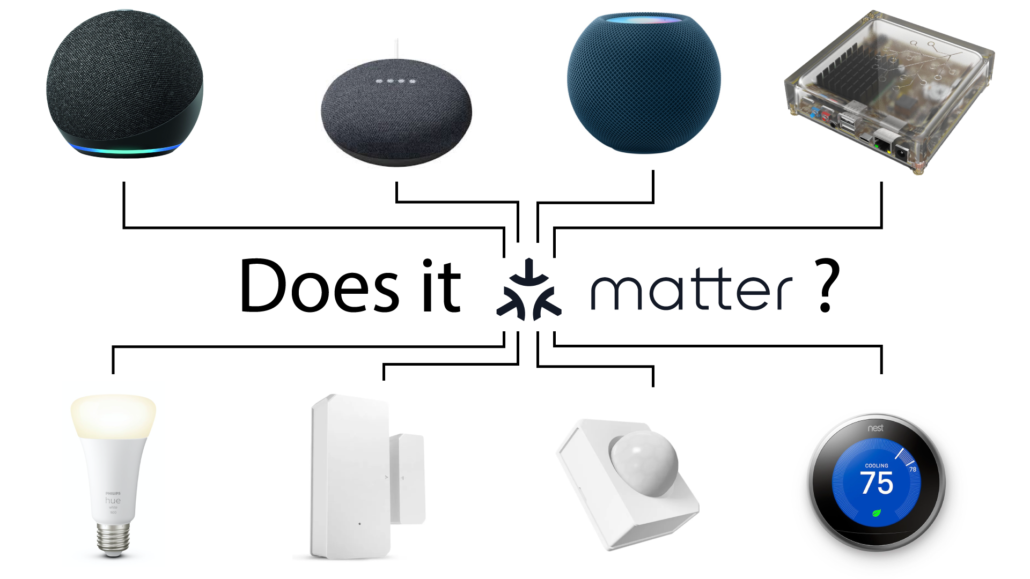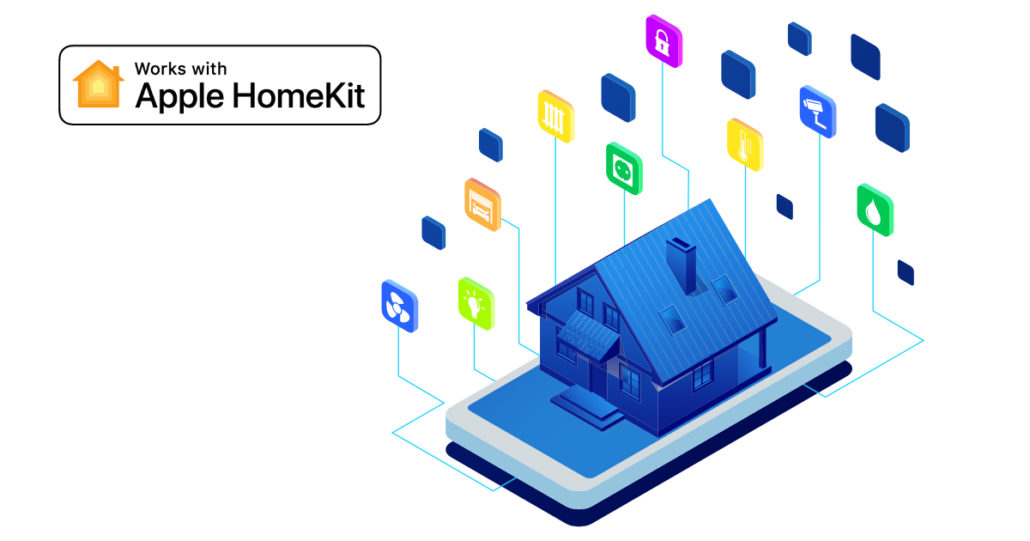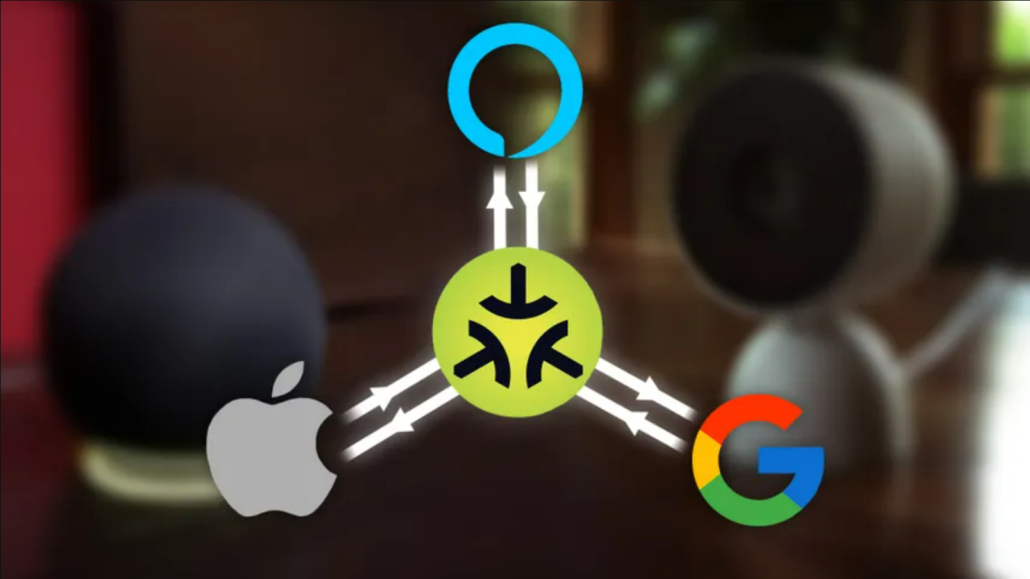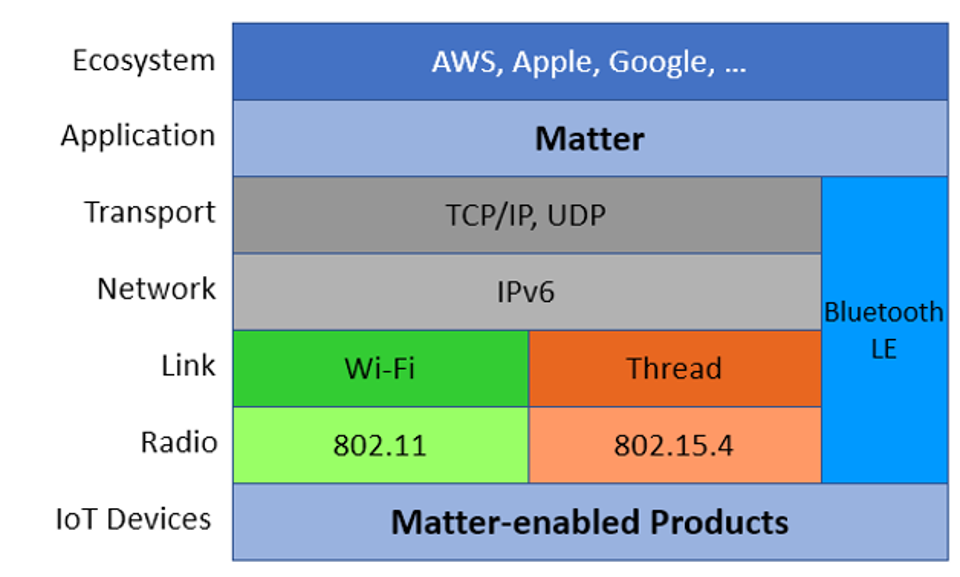How Matter Will Transform Your Smart Home?
A few weeks ago, Matter was announced and now it has become the talk of the town in the Smart Home world. Let’s dive deep into what the fuzz is all about and whether it really matters to use Matter!

What is Matter?

Matter is a smart home standard founded by the Connectivity Standards Alliance (CSA) and they released the first version which is Matter 1.0 last month. An official launch event is expected to happen on the 3rd of November. {Update: Below is the full event}
So, what is this new smart home standard? In simple terms, Matter will completely change the way you set up and communicate with your smart home devices. Let’s say you wanted to build a smart home. What would you need to buy first? Well. First, you need a smart home hub such as an Apple HomePod, Amazon Echo, Google Nest, etc. After you decide on a hub, next you need to choose a bunch of smart home devices that will talk with the hub that you bought. These devices can be smart bulbs, smart door/ window sensors, smart switches, etc. When it comes to choosing the devices, there comes a big challenge of choosing the right devices that will work with the Hub you bought. For example, if you bought an Apple HomePod, all the smart home devices that you choose to buy will have to be supported by Apple HomePod. This means you are stuck inside one ecosystem.

Matter will revolutionize this by introducing a single standard for all devices, which means, smart home devices that are only supported to work with Apple HomePod will also work with other hubs such as Amazon Echo and Google Nest. This means you only need to check whether a particular device is Matter compatible. If that is, then you can simply connect it to any Hub that is Matter-ready. Currently, many companies such as Apple, Google, and Amazon have signed up to support Matter and since Matter is open-source it is convenient for these companies to integrate Matter into their devices. Let’s wait and hope for another revolution in the smart home world with Matter!

How Does Matter Work?
Matter will use Thread or Wi-Fi for communication between smart home devices and hubs. When Matter-ready devices start rolling out, most of the devices will rely on Thread because it offers low power and low latency with a wireless mesh networking system. However, some devices will rely on Wi-Fi as well. Also, Matter will use Bluetooth for device provisioning which will make the entire set up process seamless.
Here is what Matter Network Stack looks like:

Let me walk through what a simple setup process of a Matter device with Wi-Fi will look like.
- Turn on the Matter device
- Connect the mobile phone to the home Wi-Fi network and turn on Bluetooth
- Scan the QR code on the Matter device
- The phone will send the device credentials over to the Matter server on the same network
- The matter device will connect with the Matter server
Do I Need to Buy New Smart Devices and Hubs to Experience Matter?
As mentioned before, Matter devices and Hubs will release very soon. But this does not mean you have to buy them at launch if you already have smart home devices. Device manufacturers will push firmware updates to existing non-Matter devices and hubs to support Matter. For example, for a hub to be Matter-ready, it should mainly have Thread and Wi-Fi support. Currently, hubs such as Amazon Echo, and Apple HomePod already have that. So, they will be Matter-ready in the near future. In the beginning, only the following device types will be supported by Matter and more devices will be supported later on.
- Light bulbs
- Smart plugs and switches
- Smart thermostats
- HVAC controls
- Smart shades
- Smart sensors
- Connected locks
- Media devices, including TVs.
How Is the Current Progress of Matter Support From Device Manufacturers?
As mentioned earlier, more and more device manufacturers are developing devices to support Matter and these are the updates we can see from some of them so far.
Apple
Apple has already rolled out an update to their HomePod to support Matter. This means you can use Apple HomePod as a Matter Hub. Check the news here.
Amazon
Amazon has announced that they will release the Matter support to their smart home devices at the end of 2022. Check the news here.
Google announced on Wednesday at its I/O 2022 convention that they are planning to launch Matter at the end of 2022. Check their official post here.
SONOFF
SONOFF is currently working on Matter and they have announced here that they will launch the first Matter product in Q4 of 2022 or early 2023.
Philips
Philips Hue is a very popular product when it comes to smart lighting. It seems from this post that Philips Hue will also be updated with Matter, but a release date is not mentioned.
Tuya
Tuya has announced here that on August 25th, they officially launched their latest product solutions that will support Matter. But still, the Matter-ready devices cannot be seen in their official stores. Seems like they are still working on it.
There are more and more manufacturers apart from the above, who are working on Matter support. So we can see a large Matter network building out in the near future!
How Can Matter Benefit You?
What are the communication protocols that we currently use with smart homes? They are mainly Wi-Fi, Bluetooth, Zigbee, and Z-wave (Related Reading: Matter vs Zigbee vs Thread, What’s the Difference? ) If we have all these other protocols working, why do we need to focus on Matter? Well. This is where we can talk about the benefits of Matter over others. Technically, Matter is a smart home standard and it is not an entirely new wireless communication protocol. Matter is an application layer over existing Wi-Fi and Thread protocols as mentioned before.
Inter-compatibility
The main benefit of Matter is the inter-compatibility that we talked about before, which is the ability to mix and match different smart home devices with different hubs.
Privacy and security
Matter will also make sure all the data is kept locally and nothing is sent to the cloud. This is very useful for privacy and security.
Easy to setup
As explained before, it is very easy to set up Matter devices. It takes only a couple of seconds to add any Matter device to a Matter hub with the help of Bluetooth.
Reliable for a long time
Using Matter means you are not relying on cloud providers to control their sensors. This means if the company shuts down and goes out of business, you can guarantee your Matter devices will keep working,
Long battery life
Since Matter will mainly use Thread, it will save a lot of power, making the devices work for years without changing batteries.
What Does This Mean for Home Assistant?
When it comes to smart home solutions, Google Nest, Amazon Echo, and Apple HomePod are the big players in the industry. However, when it comes to open-source smart homes, Home Assistant is one of the most popular. Similar to commercial smart home solutions, Home Assistant is also a smart home solution that is completely open-source and offers a great number of features. We already have getting-started guides for Home Assistant with reTerminal and ODYSSEY-X86. Please check them out if you want to experience them.

Just like the other big companies, the company behind Home Assistant which is Nabu Casa is also a part of the Connectivity Standards Alliance (CSA) and Matter will be ready to use Home Assistant as well. Currently Home Assistant Yellow and Home Assistant Connect ZBT-1 (previously known as SkyConnect) will be both Matter ready because of the Thread hardware inside them. Also, you will be able to turn any Home Assistant server running on a Raspberry Pi, X86 machine into a Matter server by just using a Bluetooth module and WiFi/ Ethernet support. However, in this case, only Matter devices with WiFi support will be able to connect to them. Home Assistant has already rolled out an experimental version of Matter for folks to try out and they recently showcased this with a demo during the below workshop
The following is what they did during the live workshop demo:
- Use Home Assistant Yellow and add a Bluetooth adapter
- Add Matter experimental support via an add-on
- Flash Matter firmware to ESP32C3 Dev Kit
- Provision an ESP32C3 Dev Kit via Bluetooth and connect to the Home Assistant Yellow via Wi-Fi
- Control the built-in LED on the ESP32C3 Dev Kit using Home Assistant
How Can Seeed Devices Support Matter?
To build a Matter server (also known as a Matter Hub), you can use a Home Assistant Skyconnect USB stick and connect it to your Home Assistant Server. However, this is not supported yet. According to SkyConnect product page, Home Assistant is already working on the Matter implementation but more information will come after November. Once Skyconnect releases the Matter support, reTerminal and ODYSSEY-X86 will be able to serve as Matter Hubs so that you will be able to connect other Matter-ready end devices to them.
Further Reading
You can follow the links below to learn more about Smart Home related tutorials with Seeed hardware
- Getting Started with Home Assistant on reTerminal
- Getting Started with Home Assistant on ODYSSEY-X86
- How to Customize Home Assistant
- Connect Grove Modules to Home Assistant using ESPHome
does matter works with only ble end device ?
Matter uses BLE for device provisioning and WiFi or thread for communication with the hub. So the end device should have BLE and also WiFi or Thread for it to be Matter-ready.
for Matter Sensors, the Xiao BLE and Xiao BLE Sense can also support Matter as they use the nrf52840. Somehow I think those are more rapidly integrated to matter using the openthread network
Theoretically, this should be possible. But this means that special firmware needs to be developed for XIAO BLE (Sense) to make it Matter-ready.